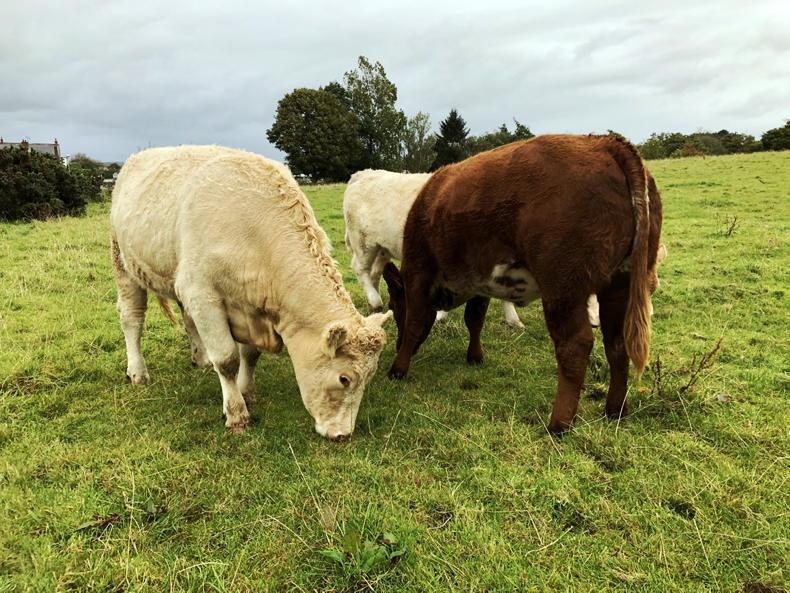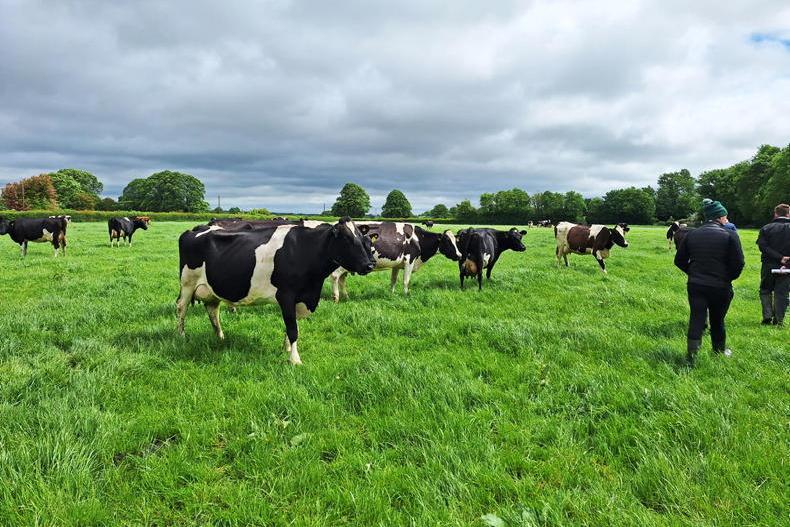While many farms have cattle housed for the winter, there is a significant number of animals still grazing.
On such farms, thoughts should be turning to closing off paddocks in preparation for spring turnout. Ideally, paddocks should be grazed out as tight as possible before closing up for the winter.
Leaving heavy covers over winter increases the amount of dead grass accumulating in swards, limiting growth rates next spring.
But with ground conditions getting harder to manage, cleaning out paddocks can be difficult to achieve.
However, a well-planned final rotation should ensure covers are grazed out, as well as protecting swards from poaching in late autumn.
Outlined are five tips to completing the final grazing rotation.
1. Prioritise lighter cattle for grazing
Lighter cattle will inflict less ground damage during wet autumn conditions. Therefore, as far as possible, prioritise these animals for grazing out paddocks.
If ground conditions permit, cows can be used to help clean out paddocks at a faster rate. But once swards start to poach, house cows as soon as possible.
Gradually weaning spring-born calves at grass can also work well to clean off paddocks. Slipping a few cows away from calves every few days, and housing, will reduce sward damage in late autumn.
With weaned calves still at grass, hopefully they can continue to graze for another few weeks to clean out paddocks.
2. Target the heaviest covers first
Focus on grazing as many heavy covers as possible before cattle have to be housed. Do not worry about sticking to the normal direction in which paddocks are grazed.
It is more important that heavy swards are grazed off, so skip paddocks as required. The same principle should be applied to grazing out covers on heavier paddocks, leaving drier fields to the end of the rotation.
3. On-off grazing
On farms with a sizeable grazing platform surrounding the farmyard, there is the option to let weanlings out to grass by day and rehousing in the evening for a short period.
Cattle should go out hungry every morning to increase grass utilisation. Therefore, do not push in silage to animals when checking stock in the morning.
Offer concentrates and a small quantity of silage as a buffer feed when animals are rehoused in the evening.
It will take a few days for weanlings to get used to on-off grazing, during which time animals can test your patience. But stick with it.
After a few days, animals should move freely in and out of the yard. The main downside of on-off grazing is animals will continue to pick up parasites from extended grazing, so keep this in mind when treating for parasites.
4. Keep cattle in smaller groups
Smaller grazing groups should be used to spread more animals across the farm, targeting as many heavy covers as possible.
Smaller groups will also reduce stocking pressure on ground, thereby limiting sward damage.
5. Sheep
The last option is to make use of sheep to clean out paddocks, either with breeding ewes or store lambs. These can be owned animals or brought in on a winter grazing arrangement.
As selective grazing animals with lighter body weight, sheep are an effective way to clean off grass covers in late autumn.
Stick to a rotation and once paddocks are grazed, close them off. Do not be tempted to allow animals back into paddocks for a quick grazing again later in the year.
Read more
44 sheep stolen in Donegal
Beef management: Time to weigh cattle and review performance
While many farms have cattle housed for the winter, there is a significant number of animals still grazing.
On such farms, thoughts should be turning to closing off paddocks in preparation for spring turnout. Ideally, paddocks should be grazed out as tight as possible before closing up for the winter.
Leaving heavy covers over winter increases the amount of dead grass accumulating in swards, limiting growth rates next spring.
But with ground conditions getting harder to manage, cleaning out paddocks can be difficult to achieve.
However, a well-planned final rotation should ensure covers are grazed out, as well as protecting swards from poaching in late autumn.
Outlined are five tips to completing the final grazing rotation.
1. Prioritise lighter cattle for grazing
Lighter cattle will inflict less ground damage during wet autumn conditions. Therefore, as far as possible, prioritise these animals for grazing out paddocks.
If ground conditions permit, cows can be used to help clean out paddocks at a faster rate. But once swards start to poach, house cows as soon as possible.
Gradually weaning spring-born calves at grass can also work well to clean off paddocks. Slipping a few cows away from calves every few days, and housing, will reduce sward damage in late autumn.
With weaned calves still at grass, hopefully they can continue to graze for another few weeks to clean out paddocks.
2. Target the heaviest covers first
Focus on grazing as many heavy covers as possible before cattle have to be housed. Do not worry about sticking to the normal direction in which paddocks are grazed.
It is more important that heavy swards are grazed off, so skip paddocks as required. The same principle should be applied to grazing out covers on heavier paddocks, leaving drier fields to the end of the rotation.
3. On-off grazing
On farms with a sizeable grazing platform surrounding the farmyard, there is the option to let weanlings out to grass by day and rehousing in the evening for a short period.
Cattle should go out hungry every morning to increase grass utilisation. Therefore, do not push in silage to animals when checking stock in the morning.
Offer concentrates and a small quantity of silage as a buffer feed when animals are rehoused in the evening.
It will take a few days for weanlings to get used to on-off grazing, during which time animals can test your patience. But stick with it.
After a few days, animals should move freely in and out of the yard. The main downside of on-off grazing is animals will continue to pick up parasites from extended grazing, so keep this in mind when treating for parasites.
4. Keep cattle in smaller groups
Smaller grazing groups should be used to spread more animals across the farm, targeting as many heavy covers as possible.
Smaller groups will also reduce stocking pressure on ground, thereby limiting sward damage.
5. Sheep
The last option is to make use of sheep to clean out paddocks, either with breeding ewes or store lambs. These can be owned animals or brought in on a winter grazing arrangement.
As selective grazing animals with lighter body weight, sheep are an effective way to clean off grass covers in late autumn.
Stick to a rotation and once paddocks are grazed, close them off. Do not be tempted to allow animals back into paddocks for a quick grazing again later in the year.
Read more
44 sheep stolen in Donegal
Beef management: Time to weigh cattle and review performance










SHARING OPTIONS